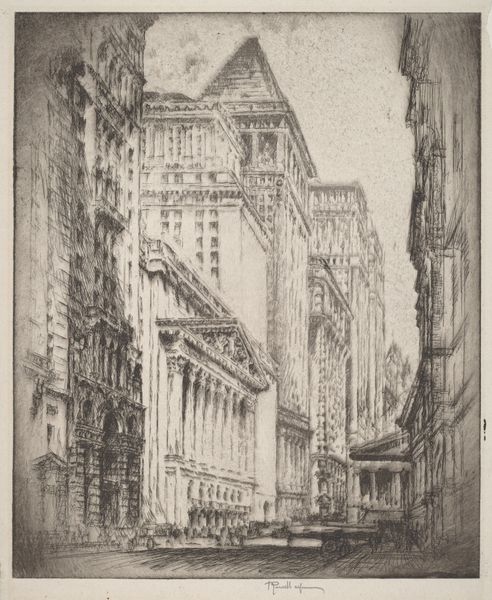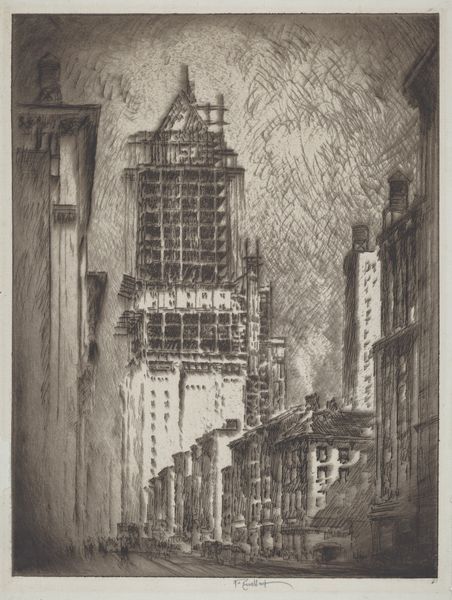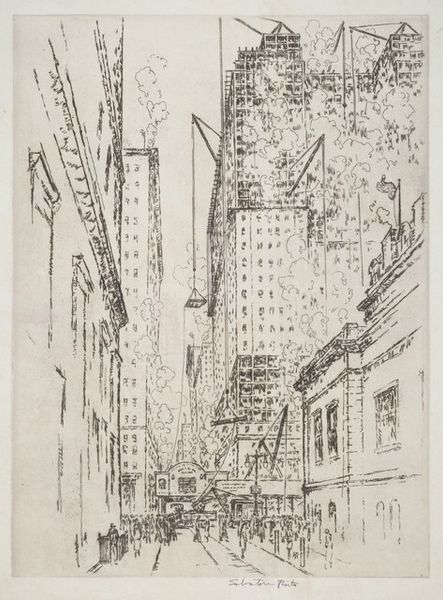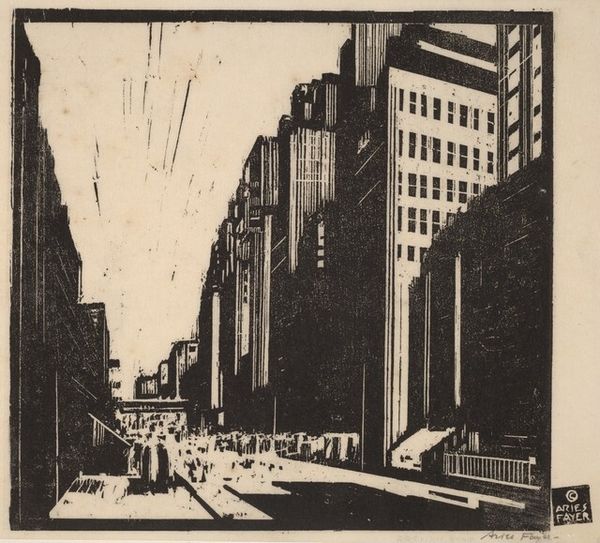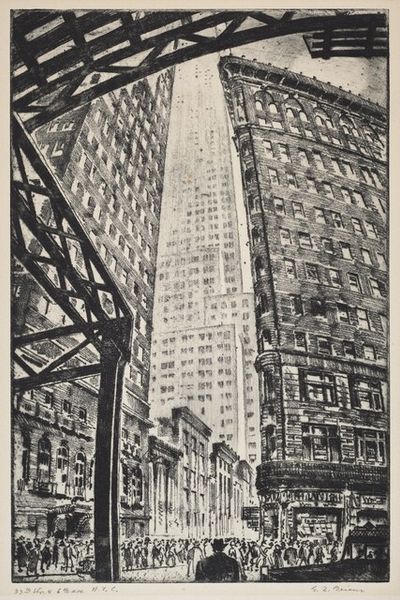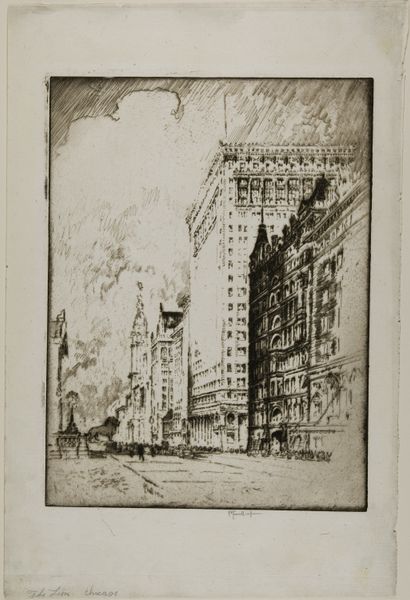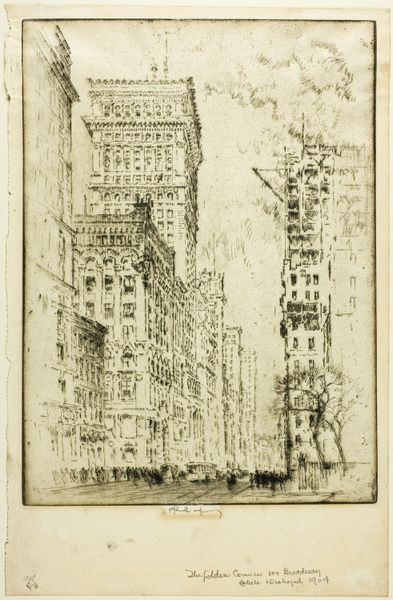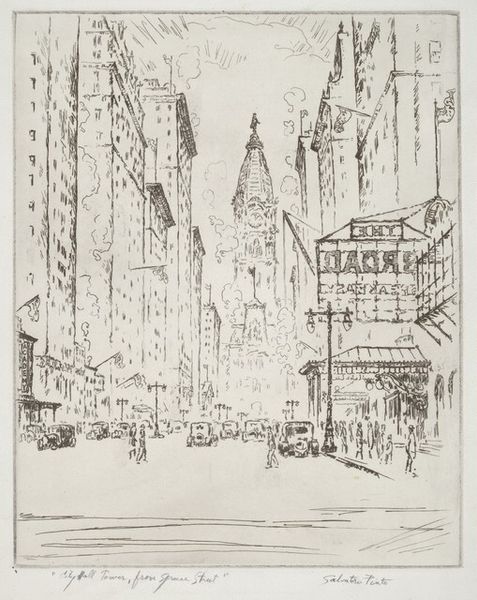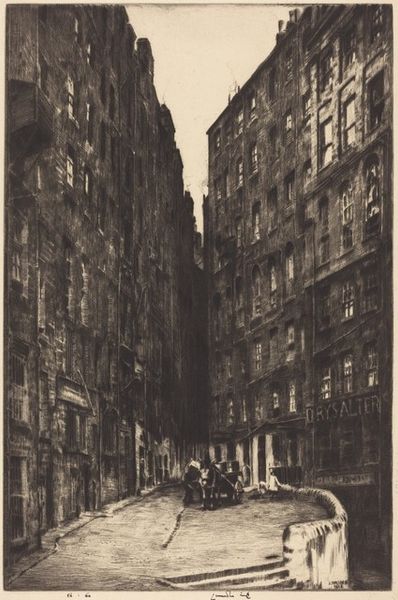
print, etching
#
art-deco
# print
#
etching
#
geometric
#
cityscape
#
realism
Dimensions: plate: 20.8 x 11.43 cm (8 3/16 x 4 1/2 in.) sheet: 49.53 x 32.07 cm (19 1/2 x 12 5/8 in.)
Copyright: National Gallery of Art: CC0 1.0
Editor: So this is "Downtown, New York," an etching by John Taylor Arms, created in 1921. I’m immediately drawn to the contrasts in light and shadow, the imposing scale of the buildings, and how geometric everything is. How do you interpret this work? Curator: Well, I find it fascinating to consider the materials used and the etching process itself. Look at how Arms uses line to convey not just form but also the texture of the stone and the very air of the city. This was a period of incredible growth and industrialization, made visible through buildings and infrastructures. The materials – the steel, concrete, the printing inks – these are the very substances of modernity being deployed to celebrate itself. What do you think about the presence of human figures? Editor: That’s a great point. It's like the human figures and even the trams are secondary. It highlights the all-consuming nature of industrial progress. They are dwarfed by the architecture, perhaps even serving its need, literally feeding into it. What’s your take on his choices? Curator: Precisely! This isn’t just about aesthetic representation. The materials themselves, and the labor that extracted, transported, and assembled them, are intrinsic to the artwork’s meaning. Even the distribution of the print—who had access to it, what did it symbolize in terms of consumption and aspiration—it all speaks to the socioeconomic structures of the time. What do you make of the way light falls? Editor: Thinking about it in terms of labor really transforms the piece for me. The light hitting the building facets almost feels…violent? Revealing the imposing scale and density. Curator: Exactly. It is less about glorifying the beautiful facade of progress, and more of making it material, something extracted from earth to form a solid proof of mankind’s progress. Editor: That’s definitely given me a fresh perspective on how to analyze the cultural impact of art through the lens of material culture. Curator: Absolutely. By examining materials and means of production, we uncover the deeper connections between art and the society from which it emerged.
Comments
No comments
Be the first to comment and join the conversation on the ultimate creative platform.
